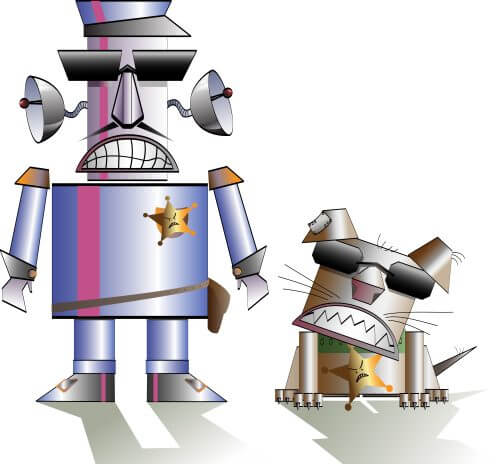The CEO of Google, Sundar Pichai, described the artificial intelligence system in a lecture during CES immediately after it was unveiled, and claimed that the special thing about it is that it gives birth to better systems through a trial and feedback method

Google is developing an artificial intelligence (AI) system capable of producing artificial intelligence by itself. According to the CEO of the company, Sunder Pichai, this ability is perceived as something impossible. In his lecture at the CES exhibition held in Las Vegas about two weeks ago, Pichai elaborated on Automatic Machine Learning, known as AutoML.
It should be noted that Google's presence at the exhibition was prominent and powerful. It held a central booth and sponsored many conferences within the framework of CES, which dealt with all the topics dear to its heart, such as its personal assistant, Hey Google, internet marketing, but also, as mentioned, provided announcements in the field of artificial intelligence. This stood out especially against the background of the fact that in recent years Google did not even have its own independent booth.
The announcement at this stage talks about a machine learning system and the AutoML Vision service, which allows developers - even those who do not have expertise in the field of machine learning - to build an image recognition system adapted to their needs. It is estimated that in the future Google will add AutoML to the building blocks of artificial intelligence: speech recognition, video, natural language decoding, and more.
Architecture that mimics the development of children
Google Brain researchers used reinforcement learning models to create a self-learning system. According to Pichai, "Designing a learning machine is something that consumes a lot of time of engineers and scientists who are few in number - especially those with doctorates in machine learning. We want to enable hundreds of thousands of developers to use machine learning, and the best way to do that is through neural networks. At AutoML, we build a deep learning startup, and tell the networks to go deeper, instead of spending nerve-wracking time programming to create an artificial intelligence that performs a certain task, the system will independently learn the process."
"The intention is to create an architecture that mimics the development of children, and only then will it be trained and improved to perform a certain task, when the feedback will be used by the controller (the software that oversees the neural network) to improve the computer's answer in the next round, and thus we will repeat the process thousands of times and create new architectures, We will check them and give the feedback. In a strange way, you can think of parents giving birth to a child and teaching him how to perform certain tasks through tests, after which they are told whether they succeeded or failed."
The parent is a machine learning system, and the child is a machine learning system, which recognizes objects such as humans and cars and other things in real-time video. You might say it doesn't sound like a big deal, but the amazing thing here is that the automatic AI system outperforms any computer vision system. AutoML reaches an accuracy of 82.7 percent, 1.2 percent more than all previous systems."
"An AI system that gives birth to new AI systems achieves better performance than any artificial intelligence system created by humans. Just think about the uses for such a system, including in self-driving a car or in enabling object recognition for robots that will work around humans, such as in the field of medicine. This has many consequences because AI can produce accurate systems, but remain efficient."
AutoML is just a first example, but it sets a strong precedent and makes AI accessible to more humans.
Inspiration for new types of neural networks
"We at Google hope that the wider machine learning community can build on this model, to answer a large number of computing problems that we have not yet been able to solve. We think that the system will inspire new types of neural networks and will allow even non-experts to create neural networks tailored to their specific needs, as well as allow machine learning to have a greater impact on everyone."
"There is a fear of what will happen if the learning of the automatic machine spills over into other areas beyond computer vision, or if a parent's AI passes on an error or bias to the child, which goes even deeper. What if the learning rate of the child AI will be so fast that we as humans will not be able to keep up with it and will not understand what it is doing at all. It may seem like a strange question today, but it is possible and one day these will be the concerns of all of us. It's really intriguing to think that this is just the infancy of artificial intelligence," concluded Pichai.
In the new service, AutoML Vision, anyone who wishes will be able to upload images to the system's cloud service, import their labels and let Google's systems automatically create a machine learning model for them. Disney, for example, used the system to enable character searches in the online store, because it allows shoppers to get a product they want and similar products, without encountering irrelevant products that just happen to share common words in the description, such as a character doll whose name is the same as a car's name Race. The method is called "visual search".
The article was published in the AIT section of the People and Computers website

One response
The singularity is here!